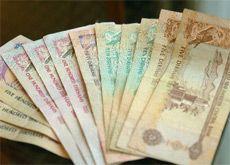The level of provisioning among banks in the UAE is still rising, an official at the central bank said on Wednesday, as creditors of indebted conglomerate Dubai World await a restructuring plan.
The banking sector in the world’s third largest oil exporter is heavily exposed to Dubai World, with estimates of potential exposure ranging up to $15 billion, according to Moody’s.
Some of the region’s largest banks, such as Mashreq and Abu Dhabi Commercial Bank, posted fourth quarter losses as a result of a steep increase in loan loss provisions.
Speaking to reporters on the sidelines of a conference in Dubai, Saeed Abdullah Al Hamiz, senior executive director for banking supervision and examination at the UAE central bank, said: “The level of provisioning is going up.”
He added: “The number of NPLs (non performing loans) is expected to go up with the crisis, not to go down. If it goes down there is something wrong. It is going up slowly – 4.5 to 5 percent. This is the level.”
He added that the banking system was strong enough to take “any further economic development”.
Al Hamiz said: “If the banks need any liquidity facility it is always available with the central bank.”
Al Hamiz also added that a regulation that reduces the period of payment default to 90 days from 180 days for sub standard loans, and requires banks to take general provisions at 1.25 percent is to be implemented “soon”.
He said: “Our intention is 1.25 percent general provisions. There is a regulation already circulated to the banks two times.”
Analysts said the UAE banks may require more state support if the debt restructuring of state owned Dubai World forces lenders to take significant debt writedowns, or “haircuts”.
Dubai World, whose debt troubles have shaken global markets, is still negotiating the terms of a restructuring plan with nearly 100 creditors.
Earlier in March, Younis Khouri, director general at the finance ministry, said banks did not need any immediate capital injection.
The central bank governor said in February he expects the level of NPLs to rise to 6.4 percent in 2010 from 4.4 percent a year ago. (Reuters)









